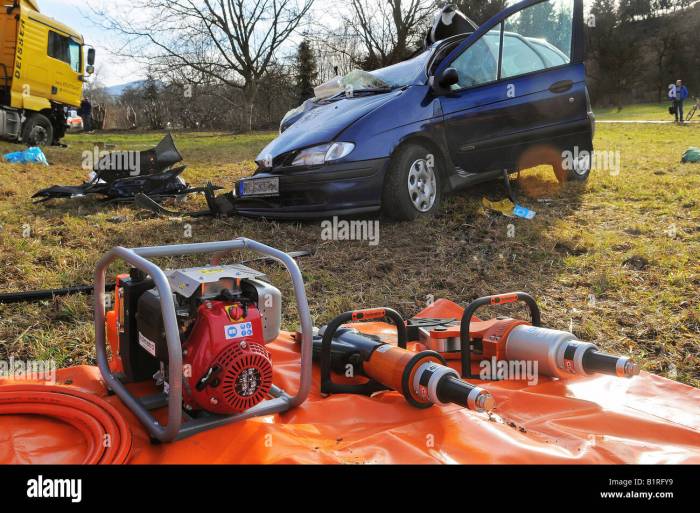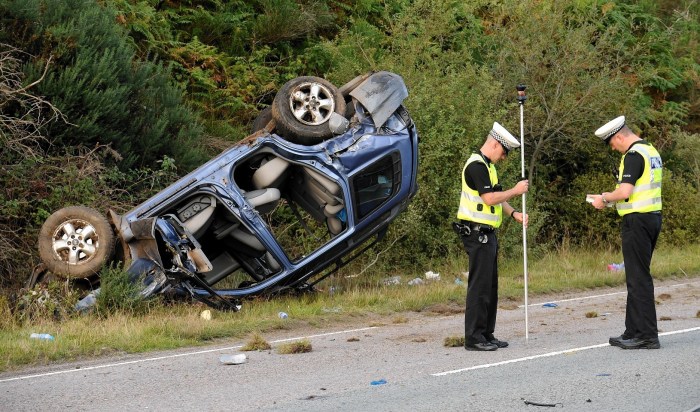Upon arriving at the scene of a motor vehicle crash, first responders are faced with a complex and often chaotic situation. This guide provides a comprehensive overview of the procedures and best practices for approaching, securing, and assessing the scene of a motor vehicle crash, ensuring the safety of all involved and the effective collection of evidence.
The content of the second paragraph that provides descriptive and clear information about the topic
Upon Arriving at the Scene

Upon arriving at the scene of a motor vehicle crash, officer safety and situational awareness are paramount. Officers must assess the scene for potential hazards and approach cautiously, securing the area to prevent further incidents.
The following procedures should be followed:
Scene Approach and Securing
- Park the patrol vehicle a safe distance from the crash, activating emergency lights.
- Approach the scene on foot, scanning for hazards such as traffic, debris, and injured parties.
- Establish a safe perimeter and control access to the scene.
Scene Assessment and Hazard Identification
- Conduct a thorough assessment of the scene, noting the following:
- Number and type of vehicles involved
- Vehicle damage and positions
- Presence of debris, skid marks, and other evidence
- Location and condition of occupants
- Identify and mitigate any potential hazards, such as leaking fuel, downed power lines, or unstable vehicles.
Vehicle Damage and Occupant Injuries
Assessing vehicle damage and determining the severity of the crash is crucial for understanding the potential impact on occupants.
Vehicle Damage Assessment
- Examine the vehicles for damage, noting the extent and location of impact.
- Use a damage scale or diagram to document the severity of the damage.
- Consider the type of vehicles involved and their potential for injury.
Occupant Injuries
- Check occupants for injuries, including visible wounds, bleeding, or deformity.
- Provide immediate medical attention as needed.
- Document injuries and obtain medical information, including names, addresses, and insurance information.
Witness Statements and Evidence Collection: Upon Arriving At The Scene Of A Motor Vehicle Crash
Gathering witness statements and preserving physical evidence are essential for reconstructing the events of the crash.
Witness Interviews
- Identify and interview witnesses, obtaining their names, contact information, and statements.
- Ask open-ended questions to elicit accurate and detailed accounts.
- Document witness statements in writing or using a recording device.
Physical Evidence Collection
- Collect and preserve physical evidence, such as debris, skid marks, and photographs.
- Use proper techniques to document and preserve the evidence chain of custody.
- Consider using technology, such as body cameras or drones, to capture the scene and evidence.
Scene Management and Investigation

Effective scene management and investigation are critical for preserving evidence and identifying contributing factors.
Scene Control
- Control traffic and maintain scene integrity to prevent further incidents or evidence tampering.
- Establish a perimeter and restrict access to authorized personnel only.
- Coordinate with other emergency responders and agencies, such as fire and medical services.
Preliminary Investigation, Upon arriving at the scene of a motor vehicle crash
- Conduct a preliminary investigation to identify potential contributing factors, such as weather conditions, road hazards, or driver impairment.
- Interview involved parties and gather information about the events leading up to the crash.
- Identify potential witnesses and collect their statements.
Reporting and Documentation

Accurate and detailed reporting and documentation are essential for record-keeping and legal purposes.
Accident Reports
- Complete accident reports, including a narrative of the incident, witness statements, and evidence collected.
- Use standardized forms or software to ensure consistency and accuracy.
- Submit reports promptly to the appropriate authorities.
Scene Documentation
- Document the scene thoroughly using photographs, sketches, and notes.
- Use technology, such as laser scanners or drones, to capture the scene in detail.
- Maintain accurate and organized records for future reference and legal proceedings.
FAQ
What are the key considerations for officer safety when approaching the scene of a motor vehicle crash?
Officers should be aware of potential hazards such as traffic, broken glass, and spilled fluids. They should approach the scene cautiously, using proper PPE and maintaining a safe distance from the vehicles involved.
What is the purpose of a preliminary investigation at the scene of a motor vehicle crash?
The preliminary investigation aims to identify potential contributing factors to the crash, such as driver impairment, road conditions, or mechanical failures. This information can help guide the direction of the full investigation.
How can technology assist in the investigation of a motor vehicle crash?
Technology such as body cameras and drones can provide valuable footage and documentation of the scene. This can help investigators reconstruct the events of the crash and identify evidence that may have otherwise been missed.